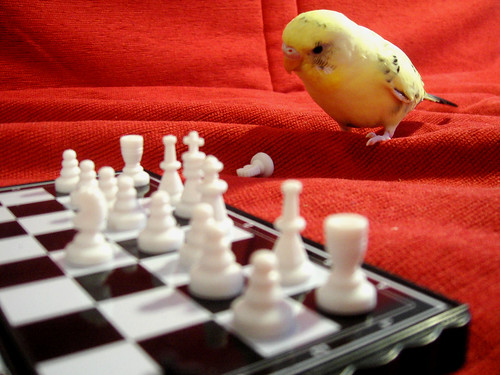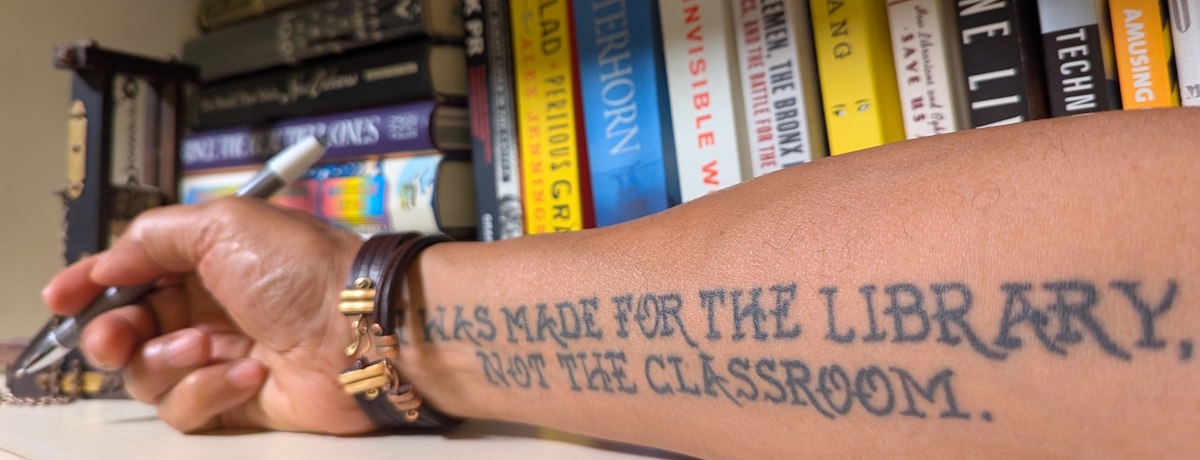
“For a list of all the ways technology has failed to improve the quality of life, please press three.”
Alice Kahn
I follow a lot of experienced marketers on Twitter, along with several whose real-world experience is questionable, and one of the most annoying memes I’ve seen is the belief that everyone should be on Twitter, particularly major brands and small businesses. When a colleague tweeted a link to a study that claimed “97% of users believe that brands should engage with their customers on Twitter”, I literally laughed out loud, noting that 97% of the people who’d take a poll like that are probably marketers.
I should have said “social media gurus” instead of marketers, because the “study” — a statistically irrelevant, 6-question survey of 208 people — is the kind of vacuous “data” that gets referenced by the former all the time.
NEWSFLASH: You’re not a guru, you just tweet a lot!
Twitter is a great personal networking tool, and there are numerous examples of businesses using it well to engage in genuine conversations with their fans, customers and critics (ie: my dustup with Starbucks), but at the end of the day, some conversations simply aren’t worth having because they can bring even more attention to your shortcomings, leading to the worst case scenario: public disengagement.
Dell’s announcement last week that they’d made $3 million selling refurbished computers and electronics via their @DellOutlet account set off another round of “The Twitter Rulez!” in the echo chamber, but that result was only surprising to those who forget, or ignore, the fact that Dell has long had a reputation for great customer service acknowledged their customer service was a problem a while back and their presence on Twitter is partly an extension of their commitment to keeping customer service a priority. (NOTE: $3M is also a drop in the bucket for a company that had revenues of $61 BILLION in 2008.) Same for Zappos and many other commonly noted “Twitter success stories” — the common denominator isn’t Twitter, it’s a fundamental belief that good customer service has always been the best marketing strategy and everything else flows from there.
@comcastcares is another commonly referenced Twitter success, the admirable initiative by Comcast to offset a well-known reputation for terrible customer service. Frank Eliason, Director of Digital Care, spoke at the CM Summit a couple of weeks ago, noting that he has a staff of 10 people, each with their own Twitter account, all interacting with Comcast customers to address problems, concerns and answer questions.
Beware the social media Kool-Aid, though; a marketing strategy that puts technology first will always come up short.
A couple of weeks ago, I had my first interaction with their Twitter-based SWAT Team and it was a perfect object lesson in why “engagement” is only one piece of the consumer marketing puzzle, and not always a good thing:
- [mironovich] Comcast=worst customer service in the world! RT @mrsbeccijo: Comcast has told me they would call back for over a year!!!!!!!!!!!
- [glecharles] @mironovich I can’t stand Comcast’s cable service. I don’t love Verizon, but I’m about to make the switch to Fios.
- [ComcastBill] @glecharles whats the issue can i help?
- [glecharles] @ComcastBill Too little HD, disorganized channel lineup, spotty internet connection. Online bill pay often doesn’t work. Sorry.
- [ComcastBill] @glecharles when is a good time to send a tech out, also i am leaving in about 10 min so grab @comcastbonnie to setup
- [glecharles] @ComcastBill @comcastbonnie Monday would be great! Can they bring an HDMI box, too? Brought a dead one at install, left a composite.
- [ComcastBill] @glecharles monday 9-11
- [glecharles] @ComcastBill Great. Looking forward to it. Thanks!
That was a Thursday, and on Monday morning, I got a call from a slightly confused Comcast technician confirming the appointment but with no clue as to why he was coming to visit. He arrived on time, checked our setup, tightened our connections outside and “fixed” a couple of things that left our cable box on the wrong setting (stretching non-HD broadcasts to fill the widescreen) and our wireless router disconnected because he didn’t know how to troubleshoot it. He also didn’t bring an HDMI box as I’d requested, both on Twitter and on the confirmation phone call.
Up to the day @ComcastBill reached out to help, I’d tolerated my displeasure with Comcast’s service and resisted Verizon’s increasingly appealing (and hilarious) siren call, more out of inertia than anything else. My hopes were raised, though, and I was truly expecting the technician would come and fix things, leaving me satisfied enough to not go through the hassle of switching service providers.
After fixing the router myself (with some remote help from one of the IT guys at my job), spending a week watching distorted TV shows, and never hearing back from @ComcastBill to follow up on the service call, I’ve had enough.
I’m calling Fios today.
Do you like email?
Sign up here to get my bi-weekly "newsletter" and/or receive every new blog post delivered right to your inbox. (Burner emails are fine. I get it!)



Not really twitter related but: Switched to fios due to similar experience with time warner. No hassle and cheaper (who knew!). You'll appreciate tv so much more.
I made the appointment yesterday; the switch will happen next Tuesday! Looking forward to it.
I made the appointment yesterday; the switch will happen next Tuesday! Looking forward to it.
I think this highlights a disconnect between Frank's team and the actual customer support infrastructure, which is a really important point. You can have all the great communicators in place on social networks that you want, but if your SocMed team doesn't have insight into and tactical oversight with the people on the ground, its all just BS lip service. Making that connection is essential. Twitter isn't just a place to make nicey nice with customers. If you can't deliver, STFU.
Exactly! You can “engage” all you want, but if your products are crap, or your customer service is lacking, you're better off just listening and fixing things in the background.
Seven months later, I'm loving Fios, have raved about it, and haven't engaged with them once via social media.